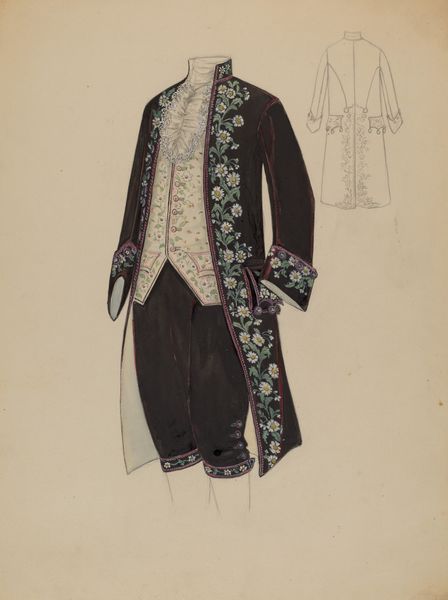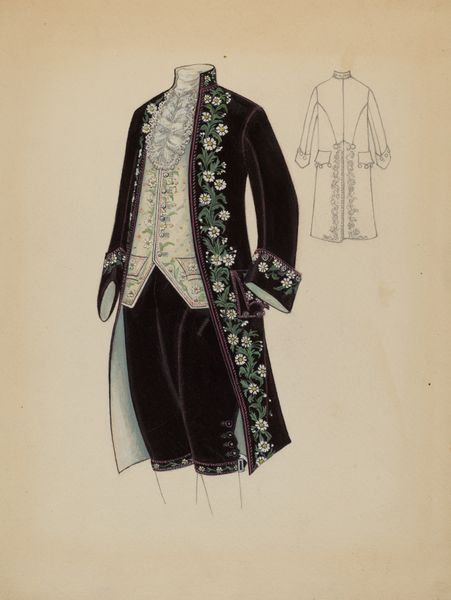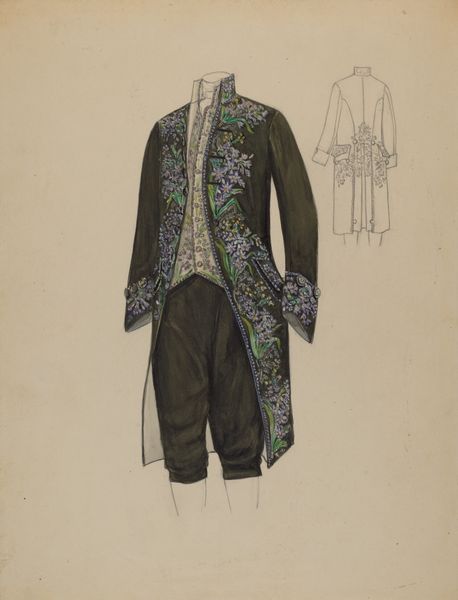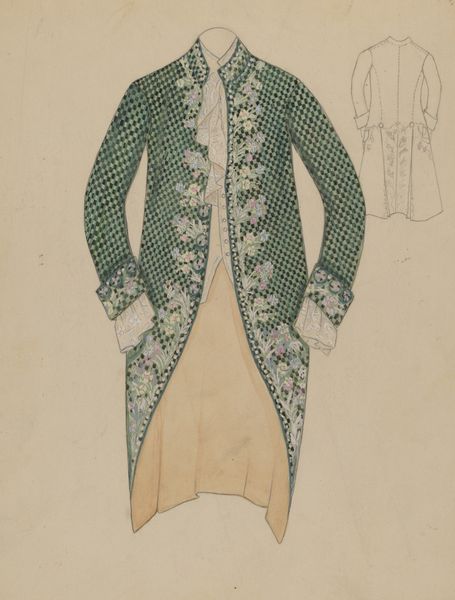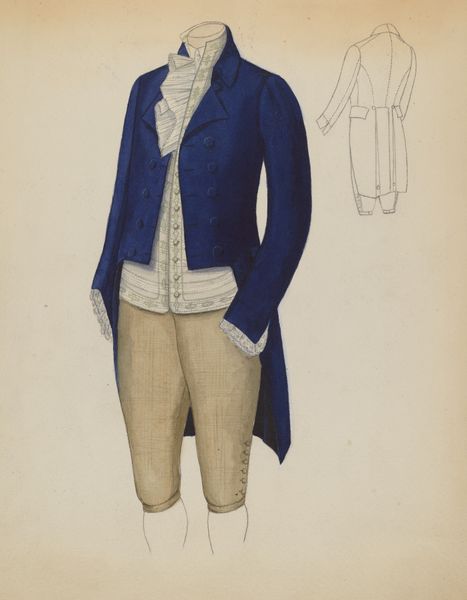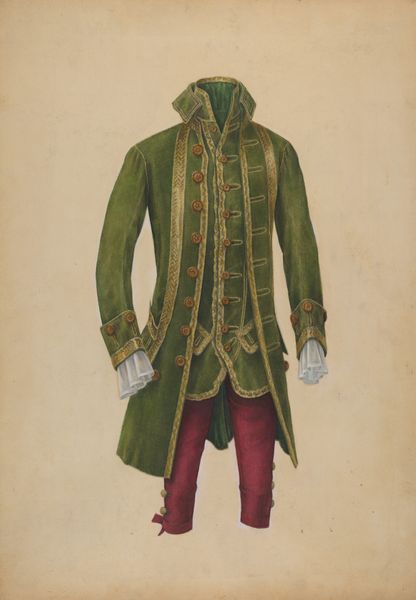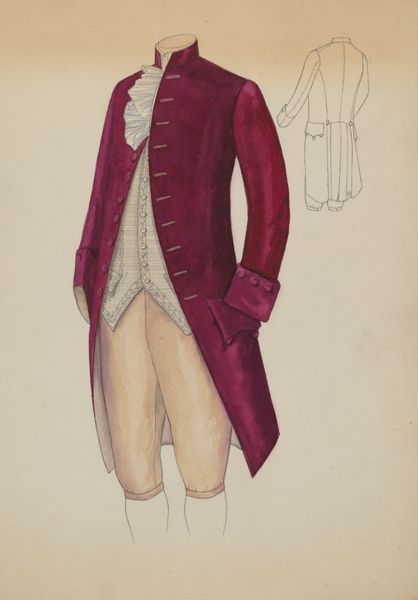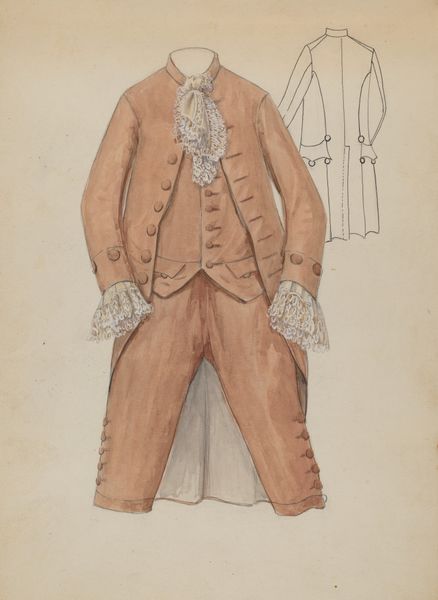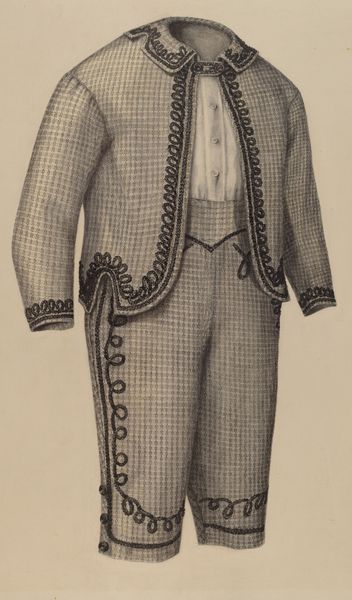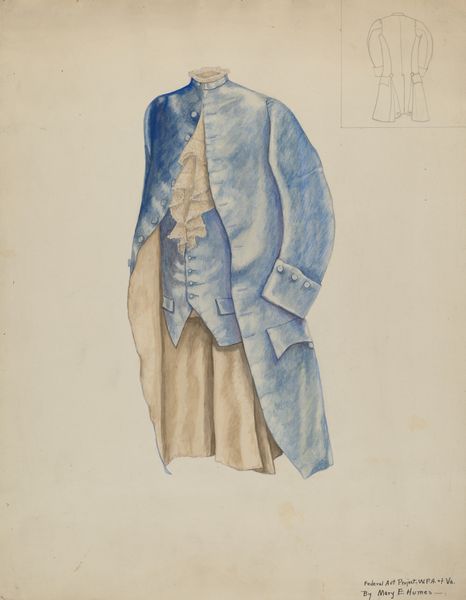
drawing, acrylic-paint, pencil
#
portrait
#
fashion design
#
drawing
#
underwear fashion design
#
light pencil work
#
fashion mockup
#
fashion and textile design
#
acrylic-paint
#
historical fashion
#
pencil
#
asian style outfit
#
fashion sketch
#
ethnic design
#
clothing design
Dimensions: overall: 30.5 x 23 cm (12 x 9 1/16 in.)
Copyright: National Gallery of Art: CC0 1.0
Curator: What a wonderfully preserved glimpse into the past! This piece is called "Man's Court Suit" and is estimated to have been created around 1936. It’s a drawing rendered in pencil and acrylic paint, a medium combination that feels particularly evocative of the period. Editor: My immediate reaction is how delicate it seems. The artist, Jessie M. Benge, really captured a feeling of ornate gentility through the texture of both the pencils and acrylic. It seems fragile. I want to know what occasion this design would have been suitable for. Curator: It certainly conveys a specific societal performance. Court suits were highly regulated garments, dictated by courtly ritual and social status. The cut, the embellishments – even the fabrics – communicated very specific messages about the wearer’s place in the hierarchy. It is intriguing what messages were being intended or parodied during the thirties. Editor: So, this isn't just a beautiful design, it’s a statement of power and allegiance made manifest through material? I'm interested in the choice of materials—pencil and acrylic suggest something perhaps less luxurious in reality than it intends to look. What does it mean to create what looks very luxurious out of rather plain and widely available media? Curator: Exactly. The visible marks of the hand through pencil suggest a process of design or draft, but equally open up this court suit’s aura to a democratisation or reproduction for different societal positionings. It is through the tension of representation and medium where this portrait takes form. Editor: I see the interplay you are describing. It also highlights how design and consumption can be intrinsically linked to social mobility, either confirming or challenging one's social place. It's interesting to consider how art like this reinforces or challenges that order through the materiality and portrayal of style. Curator: Indeed, and analyzing the way Jessie M. Benge utilized such basic materials invites consideration to all who made production of textiles available as consumers or laborers and creators themselves. These materials and artistic processes democratize fashion, or at least a representation of it, showing how widespread design might be even while this aesthetic of wealth remains inaccessible for many. Editor: I agree. Understanding those dynamics makes me appreciate the piece on an entirely different level. Thank you! Curator: The pleasure was all mine. Thinking about this design's function and composition, truly illustrates the materialist realities woven into fashion’s facade.
Comments
No comments
Be the first to comment and join the conversation on the ultimate creative platform.
